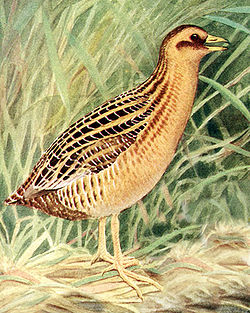| Coturnicops | |
|---|---|
 | |
| Yellow rail (Coturnicops noveboracensis) | |
| Scientific classification | |
| Kingdom: | Animalia |
| Phylum: | Chordata |
| Class: | Aves |
| Order: | Gruiformes |
| Family: | Rallidae |
| Genus: | Coturnicops G.R. Gray, 1855 |
| Type species | |
| Fulica noveboracensis [1] Gmelin, 1789 | |
